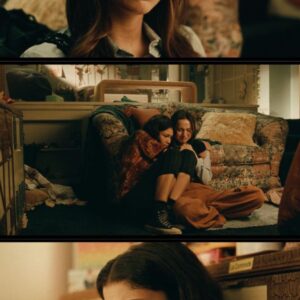In the crimson hush of South Australia’s mid-north, where the horizon devours distance and the wind etches secrets into the red earth, the disappearance of a single child has carved a wound into the nation’s soul. August “Gus” Lamont, a wide-eyed four-year-old with tousled blonde curls and a penchant for sandcastles, vanished into thin air on the evening of September 27, 2025. Last glimpsed at his grandparents’ remote sheep station, Oak Park, some 43 kilometers south of the speck-on-the-map town of Yunta, Gus’s absence has spiraled into a saga of desperate fervor and crushing inevitability. Now, exactly one week later, South Australia Police have delivered the gut-wrenching verdict: the boy is unlikely to be alive. The once-frenetic hunt for a living soul has morphed into a somber quest for remains, a pivot that shatters the fragile optimism clinging to this outback tragedy.
Gus’s world was one of unbridled wonder, a rural idyll far from the concrete clamor of urban Australia. The Lamonts, a resilient clan of graziers, tend to Oak Park’s 6,000 hectares of arid pastureland, where merino sheep dot the landscape like scattered clouds and the Flinders Ranges loom as ancient sentinels. The family had retreated to the homestead for a weekend reprieve from their base in Peterborough, a modest rail town 50 kilometers south. Gus, the littlest of three siblings, was the embodiment of country-boy charm: quiet yet intrepid, often scampering after his parents or grandparents with a stick in hand, mimicking the muster dogs. On that fateful Saturday, attired in a cobalt-blue long-sleeved T-shirt emblazoned with a grinning Minion, light grey pants, sturdy boots, and a broad-brimmed grey sun hat, he was knee-deep in a mound of playground sand just outside the weatherboard cottage. It was around 5 p.m.—the sun dipping low, casting long shadows across the saltbush—when his grandmother stepped away for a mere moment. When she returned, Gus was gone, the sand undisturbed save for his tiny imprints.
The initial response was a family’s frantic improvisation: shouts piercing the twilight, torches sweeping the paddocks, siblings and kin fanning out into the scrub. But Oak Park’s scale—vast as a small principality—swallowed their efforts whole. By 7 p.m., as dusk surrendered to a star-pricked sky, South Australia Police (SAPOL) mobilized. A PolAir helicopter thrummed overhead, its infrared scanners probing the cooling ground for any anomalous heat signature. Ground crews from the State Emergency Service (SES) arrived with floodlights, their boots crunching over the parched terrain. The night air, cooling to near-freezing, carried an undercurrent of dread; forecasters noted mild days ahead, with highs hovering around 20°C (68°F), but the outback’s capriciousness—sudden dips, deceptive gullies—loomed large.
By Sunday morning, September 28, the operation had ignited into a national imperative. Superintendent Mark Syrus, boots planted in the red dust, pledged an all-out assault: “We’re throwing everything we’ve got at this.” Within hours, the tally swelled to over 100 souls—SAPOL officers helicoptered from Adelaide, SES volunteers caravanning through the night, local graziers on horseback and quad bikes. Drones hummed in grid patterns, mapping a 3-kilometer perimeter; canine units, noses to the earth, traced phantom scents through the mallee scrub. Divers in wetsuits plumbed the farm’s dams and stock tanks, their splashes echoing in the silence, while mounted police navigated the thorny undergrowth where vehicles bogged. The terrain was a cruel confederate: dry creek lines masquerading as paths, salt pans mirage-like in the haze, and the ever-present threat of abandoned mine shafts or unmarked wells from Yunta’s opal-rush era—yawning voids that could claim a wanderer in an instant.
Yunta itself, a windswept hamlet of 60 hardy residents—home to a pair of bowser pumps, a general store, and the Yunta Hotel where tales are traded over cold beers—became the epicenter of communal resolve. Word spread like wildfire across the Barrier Highway, drawing reinforcements from neighboring stations: weathered stockmen with encyclopedic knowledge of the land, Indigenous trackers from the Adnyamathanha nation whose ancestors mapped these ranges millennia ago. “The country talks if you know how to listen,” one elder murmured, his gaze scanning the horizon as he directed teams toward forgotten watercourses. Community kitchens sprang up overnight; Robert Head, proprietor of a Peterborough eatery, wheeled in his food truck, ladling stew and brewing endless pots of tea for the exhausted. “It’s what we do out here,” he said simply. “One family’s loss is all of ours.”
Monday, September 29, marked day three, and the machinery of mercy intensified. Police cadets—40 strong, their academy polish softened by the grit—joined the fray, forming human chains through the spinifex. SES numbers topped 60, their fluorescent vests a stark contrast to the ochre palette. A pivotal find emerged late Tuesday, October 1: a solitary child’s bootprint, etched 500 meters from the homestead in a sun-baked gully. “It’s a match for Gus’s tread,” Syrus confirmed, the plaster cast cradled like a talisman. The discovery, faint yet fervent, ignited a surge—perhaps the boy had chased a goanna or bilby into the bush, hunkering down unseen. “It’s a sign he’s been out there,” a handler whispered, as dogs redoubled their sniffs.
Hope, however fleeting, propelled reinforcements. By Wednesday, the Australian Defence Force (ADF) heeded SAPOL’s call, airlifting 48 elite personnel—infantry versed in desert ops—to the site. Camouflaged figures fanned out with GPS grids, their disciplined sweeps methodically quartering the expanse. Survival pundits weighed in, offering slivers of solace. Michael Atkinson, runner-up in the brutal Alone Australia series and ex-ADF pilot, dissected the odds on national airwaves. “Farm-raised kids like Gus are tougher than they look,” he asserted. “He’s no stranger to the elements—nights might bite, but dehydration’s slower in this cool snap. He could be curled under a mulga bush, invisible from above but glowing on thermal.” Atkinson, who once endured weeks in the wild, urged nocturnal flyovers: “Infrared doesn’t lie; one heat blip, and we’re back in business.” Local goat herder Royce Player echoed the sentiment, his callused hands gesturing to the scrub: “Gut feeling says he’s close. Retrace that print—kids double back.”
Yet, as Thursday dawned—day six—the calculus of endurance turned inexorable. Gus had now endured 108 hours sans sustenance or shelter: sub-zero nights sapping his tiny frame, diurnal warmth a mocking tease. Police huddles with the Lamonts grew shadowed, preparing them for the abyss. On October 3, Assistant Commissioner Ian Parrott faced the media scrum under a leaden sky, his features etched with the toll of command. “We’ve clung to the miracle, but it hasn’t come,” he said, voice fracturing. “Expert advice tells us survival beyond this point is improbable. In the last 48 hours, we’ve ramped up—ADF sweeps, extra trackers—but we must now transition.” The intensive phase, SAPOL’s most colossal ever—spanning helicopters, divers, hounds, and hordes—yielded to the Missing Persons Unit’s quieter remit: recovery, not rescue. Ground teams slimmed to a core; drones stilled; the ADF’s rotors faded into the distance.
The announcement landed like a thunderclap in a parched land. Phone lines, flooded since the family’s Thursday release of Gus’s first public photo—a beaming snapshot of him knee-deep in Play-Doh, clad in a Peppa Pig tee, his curls framing a grin of pure mischief—had buckled under the deluge. “We’re swamped with tips, many heartfelt but speculative,” Senior Constable Peter Williams implored via ABC Radio. “Only facts, please—no opinions.” The image, a reluctant gift to jog collective memory, amplified the ache: a boy mid-laugh, oblivious to fate’s twist. For the Lamonts, ensconced in Peterborough’s embrace, the void was visceral. A statement, voiced by a kin-appointed surrogate, quivered with raw grief: “Gus’s absence hollows us; we ache beyond words. Our beautiful boy—please, bring him home.” Siblings stared at empty chairs; parents replayed the sand-mound vigil; grandparents, stewards of this soil for generations, questioned the land’s betrayal.
Whispers of what-ifs swirled in Yunta’s pub, where locals nursed sorrows over flat whites. Abduction? Dismissed—the highway’s traffic is sparse, strangers scarcer than summer storms. Misadventure reigned: that lone print hinting at a scramble toward a dry creek, only to tumble into an opal-era shaft, its mouth camouflaged by overgrowth. “Those old workings are death traps,” a multi-generational rancher confided, his eyes distant. “One slip, and echoes fade to nothing.” Others pondered wombat burrows or sudden flash-flood scars, though rains had held off. The outback, nurturing yet merciless, claims the unwary yearly—echoing tales like four-year-old Clinton Meagher’s 1999 vanishing in Queensland’s scrub, or the 2014 heartbreak of Clea-Anne Mallett in the NT. Each etches a caution: technology’s reach falters where the wild holds sway.
This pivot to recovery ripples beyond the red dunes. Advocates clamor for rural safeguards—GPS fobs for tots, subsidized aerial surveys, mandatory well-cappings. “We can’t let Gus be just another statistic,” a Peterborough councilor urged, petitions circulating online. Nationally, it stirs the psyche: a reminder of isolation’s edge, where 300 kilometers from Adelaide feels like another world. Yet, flickers defy the dark. Atkinson’s defiance—”Search till you touch him”—bolsters the holdouts; Player’s intuition fuels backtrack pleas. The Lamonts, buoyed by casseroles and cards, vow endurance: “Hope’s our anchor, even in storm.”
As October 4 breaks over Oak Park—day eight now—the silence deepens, broken only by wind through the gums. Gus Lamont, the sand-sculptor turned specter, embodies innocence’s fragility against nature’s indifference. In Yunta’s sparse streets, a chalked heart adorns the hotel wall: “For Gus—come home.” The recovery grind persists, a dignified dirge for the lost. But in Australia’s vast heart, where boys chase horizons, his story lingers—a call to cherish the fleeting, guard the vulnerable, and, against odds, never wholly surrender the light.


